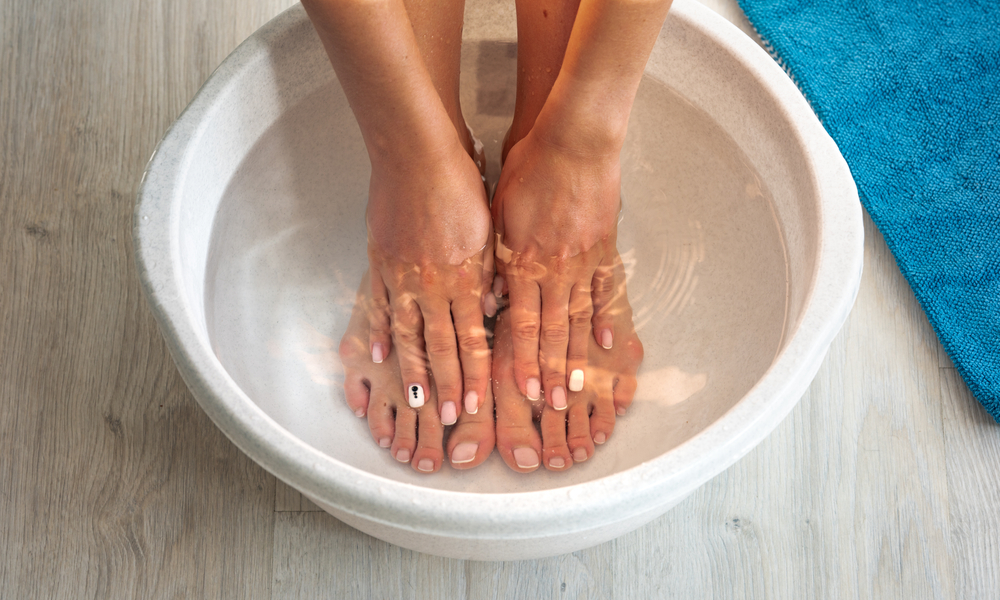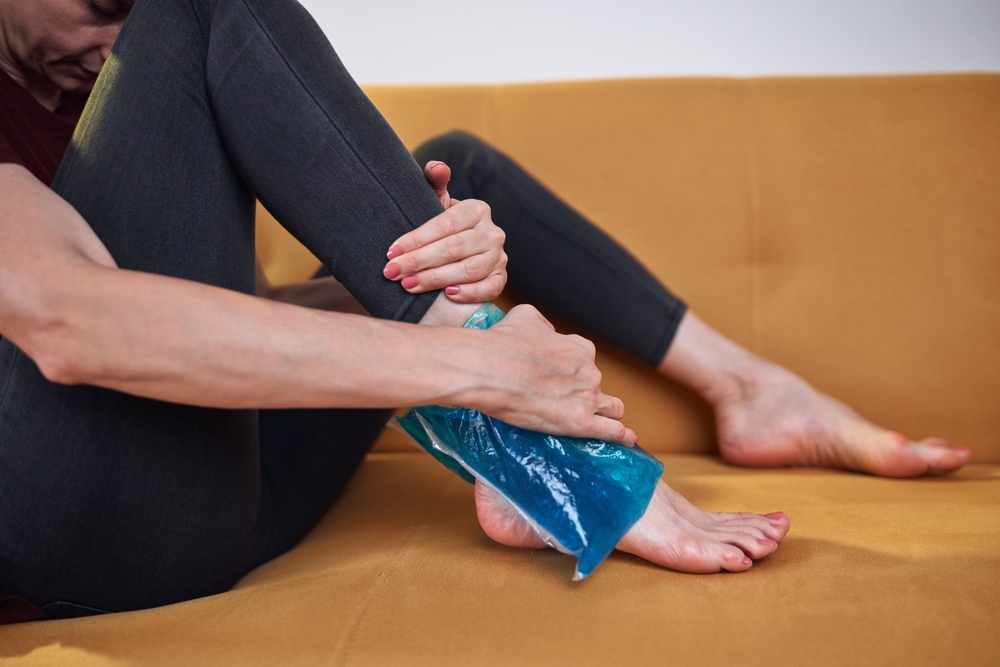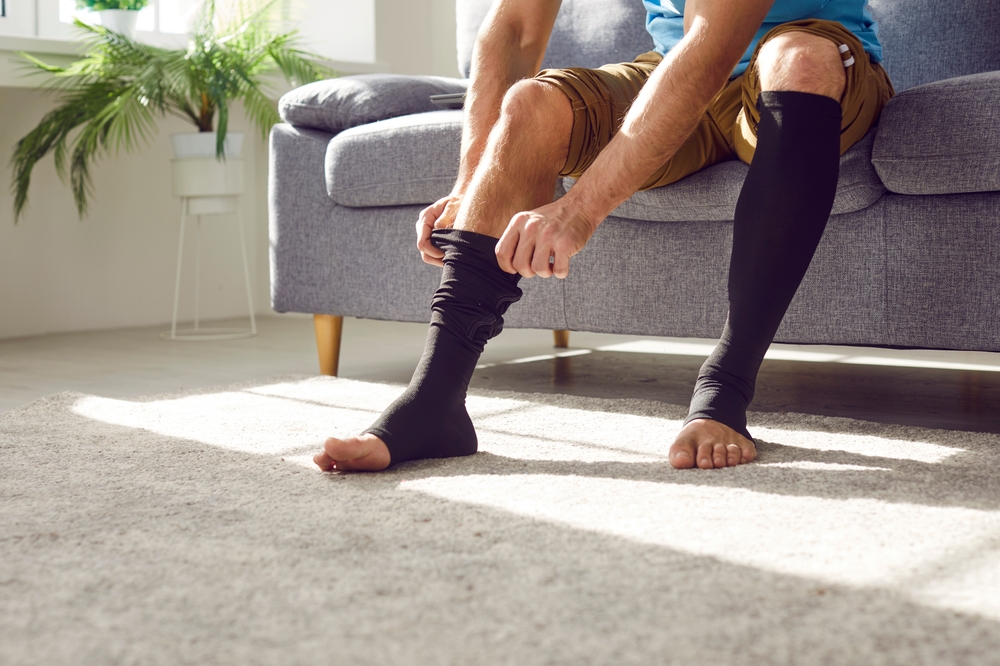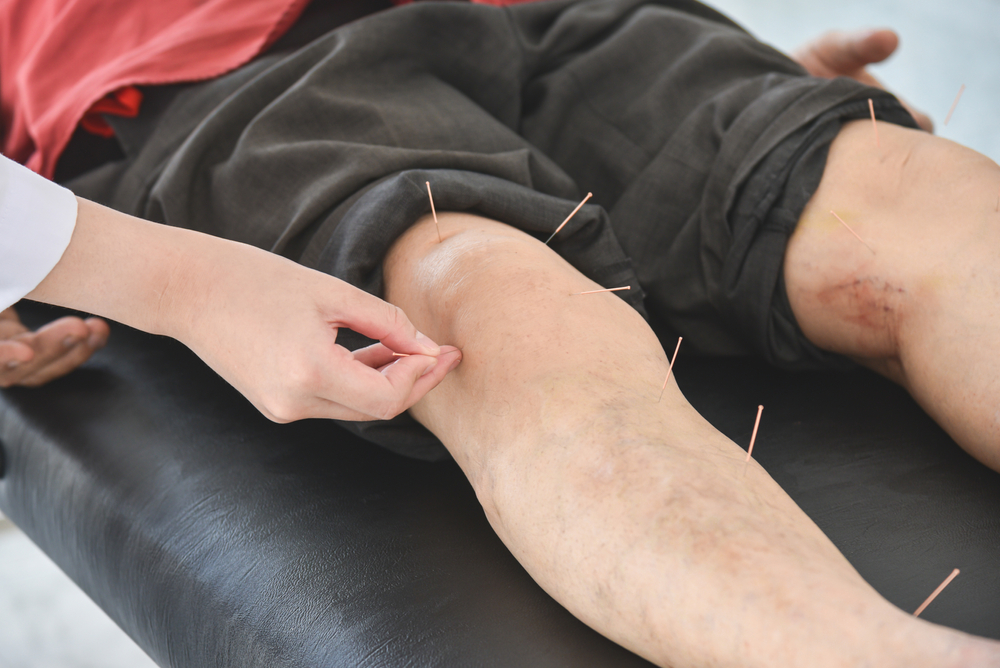Peripheral neuropathy is a condition that arises when the peripheral nerves, which connect the brain and spinal cord to the rest of the body, become damaged. This damage can lead to a range of uncomfortable and even disabling symptoms. While diabetes is a leading cause, other culprits include infections, injuries, and autoimmune diseases. Without proper treatment, these symptoms can worsen and affect daily life. However, early diagnosis and consistent care can help manage the pain and even reverse some nerve damage. Understanding the causes and treatment options is key for neuropathy relief. In this slideshow, we’ll explore how doctors diagnose peripheral neuropathy and share practical home remedies to ease nerve pain in the legs, feet, and toes.
Recognizing the Symptoms

Recognizing the symptoms of peripheral neuropathy is essential for timely treatment. Often, people experience nerve pain in their legs or a burning, tingling feeling in their feet and toes. Some also report sharp, shooting pains or a feeling like wearing an invisible sock. Muscle weakness, coordination problems, and increased sensitivity to touch are common, too. These symptoms can make simple tasks, like walking or standing, more difficult. In many cases, they start subtly and become more pronounced over time. Paying attention to these changes can help you seek care early and avoid further nerve damage. If you notice numbness, tingling, or sudden weakness in your legs, feet, or toes, it’s best to talk to a healthcare professional. Prompt diagnosis and neuropathy relief strategies can improve your quality of life.
Importance of Early Diagnosis

Early diagnosis of peripheral neuropathy is crucial for preventing permanent damage and easing symptoms. Often, people dismiss early signs as temporary discomfort. However, these symptoms can indicate underlying issues that need attention. Visiting a healthcare provider can lead to a better understanding of the cause, whether it’s diabetes, vitamin deficiencies, or another condition. Tests and exams help pinpoint the problem and guide an effective treatment plan. By addressing the root cause early, you can improve circulation, reduce nerve pain in feet, and prevent complications like infections or falls. Don’t wait to seek answers if you notice changes in how your legs or feet feel.
Medical Evaluation and Tests

Diagnosing peripheral neuropathy involves several important steps that start with your healthcare provider. First, they will discuss your symptoms and medical history to understand the possible causes of nerve pain in legs or feet. They may ask about diabetes, alcohol use, injuries, or family history of nerve problems. Next, a physical exam checks your reflexes, strength, balance, and how well you feel sensations in your toes and feet. Blood tests can reveal conditions like diabetes, vitamin deficiencies, or autoimmune disorders. Imaging tests like MRI or CT scans help identify structural issues that could be causing nerve pain. Doctors also use nerve conduction studies or electromyography (EMG) to measure how well your nerves send signals. These tests are key for finding the root cause and tailoring a treatment plan for effective neuropathy relief.
Foot Baths for Relief

A warm foot bath can offer quick relief. Soaking your feet in warm water helps improve blood flow and relax tense muscles. This simple step can ease tingling and burning. Add Epsom salts to boost the soothing effects and reduce swelling. For even more comfort, consider adding peppermint or chamomile essential oils. These oils bring a calming scent and may reduce inflammation. Foot baths work well before bedtime, helping you sleep better and easing the pain in your feet. Although foot baths won’t cure nerve pain, they are a gentle way to support your nerves. Aim to soak your feet for 15 to 20 minutes. Enjoy the relaxing feeling and give your nerves a chance to calm down.
Using Ice Packs

Applying ice packs can be a simple way to reduce nerve pain in the legs and feet. Cold therapy numbs sharp, burning pain and calms inflamed nerves. Wrap an ice pack or a bag of frozen peas in a cloth and place it on the sore area. Keep it there for 10 to 15 minutes. This cooling relief can make nerve pain in toes and feet feel less intense. Use ice therapy after long walks or if pain flares up in hot weather. Alternate with warm foot baths for balanced care. Avoid placing ice directly on the skin to protect from frostbite.
Read More: 14 Less Obvious Signs Your Body May Be Lacking In Vitamin D
Benefits of Foot Massage

A gentle foot massage can bring welcome relief for your feet. It boosts circulation and eases the numbness and tingling linked to neuropathy. Use your hands or a massage tool to rub the soles of your feet, working up to the toes and ankles. This gentle pressure helps loosen tight muscles and calms nerves. Try using a warming or cooling lotion for added comfort. Foot massages are a simple way to relax at home and support neuropathy relief. However, remember to avoid pressing too hard to prevent irritation.
Compression Socks

Compression socks can help reduce nerve pain in legs, feet, and toes. These snug-fitting socks boost circulation by applying gentle, steady pressure to your legs. Better blood flow can ease swelling and reduce the burning pain in your feet. Compression socks are great for daytime use if you’re on your feet a lot. Some people also wear them to sleep if nerve pain keeps them awake. Choose a size that fits well. If the socks are too tight, they could make pain worse. Talk to your doctor about how long to wear them each day. Compression socks are an easy and practical way to support your legs and get some relief.
Read More: 14 Essential Oils for Arthritis Relief
Topical Pain Relievers

Topical creams and gels can offer relief. Products with lidocaine numb sore areas, while capsaicin blocks pain signals. Apply these creams to spots where you feel nerve pain. They can bring temporary relief, especially during pain flares. Herbal creams with cooling or warming effects may also soothe nerves. Always follow the instructions to avoid skin irritation. Topical pain relievers are a simple part of home remedies for nerve pain in legs. They don’t fix the cause of the pain, but they can help you feel more comfortable. For best results, combine them with other home care steps like gentle massage and warm foot baths.
Importance of Regular Exercise

Regular exercise is a key step in managing nerve pain in legs, feet, and toes. Simple activities like walking, swimming, or stretching help improve blood flow and reduce pain. Movement can also strengthen muscles and improve balance. Gentle exercises like yoga or tai chi can ease stress and offer neuropathy relief. Start slowly and listen to your body to avoid injury. Try short walks or simple stretches every day. These small steps can make a big difference. Consistent exercise keeps your muscles and nerves active. In time, you may feel less nerve pain and more energy. If you’re unsure where to start, talk to a physical therapist. They can help you find exercises that suit your needs.
Read More: 6 hidden causes of foot pain and how to get relief fast
Maintaining Good Sleep Hygiene

When you sleep well, your nerves have time to repair and heal. Create a calming bedtime routine. Try to go to bed and wake up at the same time each day. Avoid screens and bright lights before bed. Keep your bedroom cool and quiet. Use supportive pillows and a mattress that feels good for your body. Getting enough sleep is one of the best ways to boost your body’s healing power and find relief. If you struggle with sleep, talk to a doctor for more ideas.
Considering Supplements

Supplements can support nerve health. B vitamins, especially B1, B6, and B12, help nerves stay healthy. Alpha-lipoic acid is another option that can calm nerve pain and reduce burning. Acetyl-L-carnitine is also used for neuropathy relief. Before starting any supplements, talk to a healthcare provider. They can check your needs and make sure the supplements are safe. Supplements are not magic fixes, but they can be helpful as part of a complete plan. Combine them with other home care tips like warm foot baths and regular exercise.
Lifestyle Modifications

Making small lifestyle changes can help. If you smoke, quitting can boost blood flow and reduce pain. Alcohol can also make neuropathy worse, so try to cut back or avoid it altogether. Managing blood sugar is key for people with diabetes. Balanced meals and exercise can help keep your sugar levels steady. Pay attention to your feet every day. Look for cuts, blisters, or sores. Good foot care prevents infections that can make nerve pain in feet even worse. These changes can take time, but each one supports your overall health.
Read More: How To Help Naturally Reverse Gout And Relieve Joint Pain
Stress Management Techniques

Stress can make nerve pain in legs, feet, and toes feel worse. Finding ways to relax your mind and body can help a lot. Try deep breathing, meditation, or simple stretches. Listening to music or reading can also calm stress. Talking with friends or family can lift your mood and ease worries. Even short breaks for a hobby you enjoy can bring relief. Less stress helps your nerves work better and reduces the burning pain. Look for small ways to add calm moments to your day. Stress relief takes practice, but it can make a real difference.
Exploring Alternative Therapies

Some alternative therapies can help. Acupuncture is one option that uses thin needles to calm nerve signals and boost blood flow. Many people find that acupuncture brings relief from nerve pain in feet. Another approach is biofeedback, which trains you to relax and control how your body responds to pain. Transcutaneous electrical nerve stimulation (TENS) uses mild electrical currents to block pain messages. These therapies are not for everyone, but they can be helpful if other treatments aren’t enough. Talk to a healthcare provider to see if they’re right for you. Alternative treatments can be used with home remedies. Finding the right mix of therapies can give you more control over nerve pain and help you feel better.
Final Thoughts

Living with nerve pain in legs, feet, and toes can be tough. However, there are many ways to find relief. Combining medical care with simple home remedies can bring comfort. Gentle exercise, good sleep, and stress relief can also help. Remember, early diagnosis makes a big difference. Talk to a healthcare provider about your symptoms and the best treatments for you. With the right care and small changes, you can ease your pain and protect your nerves. Stay patient, keep trying new tools, and trust that each step you take can bring you closer to neuropathy relief.
Disclaimer: This information is not intended to be a substitute for professional medical advice, diagnosis or treatment and is for information only. Always seek the advice of your physician or another qualified health provider with any questions about your medical condition and/or current medication. Do not disregard professional medical advice or delay seeking advice or treatment because of something you have read here.
Read More: 7 Natural Approaches to Pain Relief and Management

